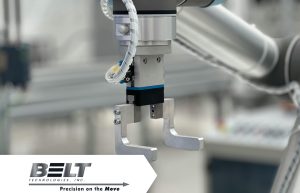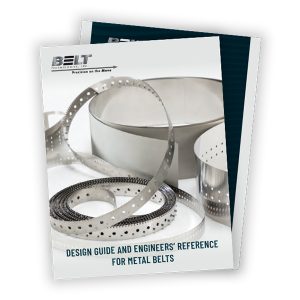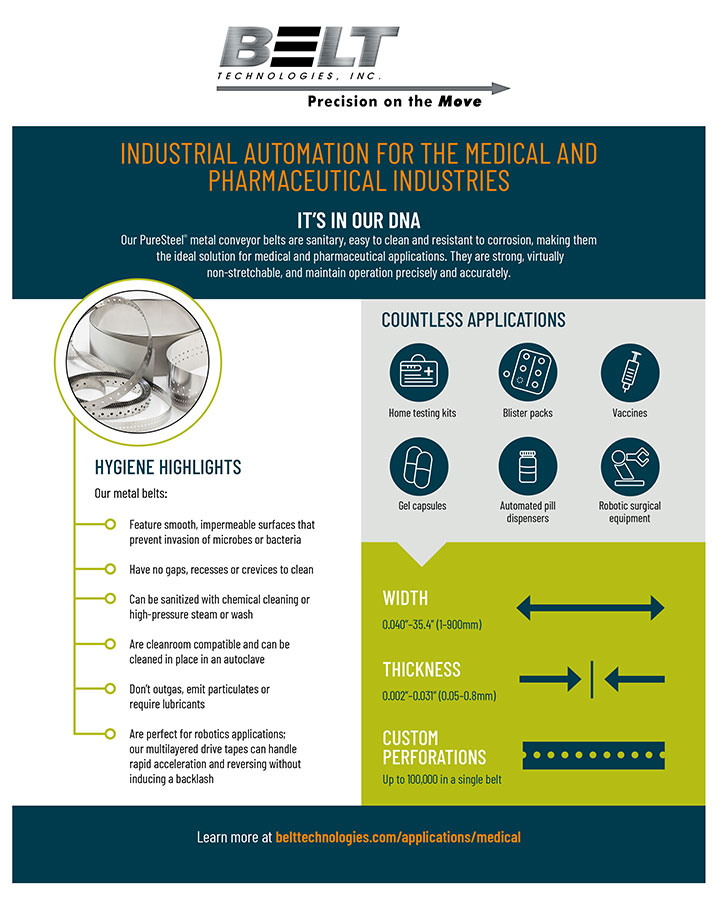 As we approach 2025, the conveyor industry is poised for significant innovation, driven by advances in technology, a heightened focus on sustainability and evolving demands from multiple industries, such as manufacturing, logistics and e-commerce. For design engineers, understanding these upcoming changes is crucial for staying ahead in an increasingly competitive market. Below are the top 5 upcoming innovations expected to reshape the conveyor industry in 2025 and beyond.
As we approach 2025, the conveyor industry is poised for significant innovation, driven by advances in technology, a heightened focus on sustainability and evolving demands from multiple industries, such as manufacturing, logistics and e-commerce. For design engineers, understanding these upcoming changes is crucial for staying ahead in an increasingly competitive market. Below are the top 5 upcoming innovations expected to reshape the conveyor industry in 2025 and beyond.
1. Smart Technologies: IoT and AI-Driven Efficiency
The integration of smart technologies, including the Internet of Things (IoT) and artificial intelligence (AI), is set to revolutionize conveyor systems. IoT devices will enable real-time data collection from conveyor components, allowing engineers to monitor performance, track wear and predict failures before they happen. This shift will significantly reduce unexpected downtime, increase productivity and minimize the need for manual intervention.
Meanwhile, AI and machine learning algorithms will enhance decision-making processes on the factory floor. AI-powered conveyors will be able to adapt to changes in product flow, optimize routing in real time and autonomously adjust to variations in demand. Predictive maintenance systems, driven by AI, will help extend the lifespan of conveyor systems, ensuring optimal operation with minimal disruption. A PureSteel belt can reduce maintenance costs with a predictable and longer life span in normal operating conditions, further maximizing the benefits of smart technologies.
2. Sustainability and Energy Efficiency
In 2025, the focus on sustainability will extend to the design and operation of conveyor systems. Energy-efficient motors, regenerative braking systems and advanced materials will play a key role in reducing the environmental footprint of conveyors. For instance, systems that harvest and reuse energy from braking processes will reduce overall power consumption.
Belt material also matters; PureSteel® provides low friction operation that requires less energy to run smoothly and efficiently. Over its lifetime, a PureSteel® belt can help a manufacturer realize significant reduction in energy consumption. Also, because our steel belts can withstand extreme temperatures without deformation or degradation, they are ideal for conveying hot materials, reducing the need for energy-intensive cooling systems.
Additionally, as more companies strive to meet carbon reduction goals, there will be an increased demand for solar-powered conveyors and designs that consume less energy overall. Engineers will need to consider sustainability from the ground up, incorporating features that not only meet industry standards but exceed them. This will include selecting materials that can be easily recycled or reused, as well as reducing waste during the manufacturing process. Metal belts like ours require far less frequent replacement and are fully recyclable.
3. Modular and Flexible Conveyor Designs
The push for modular and flexible designs will continue to grow, especially in industries like logistics and e-commerce, where adaptability is key. Modular conveyors can be easily reconfigured to meet changes in production lines or warehouse layouts, reducing downtime and increasing versatility. This adaptability is essential in fast-paced environments where product lines and workflows change frequently.
For design engineers, this trend means creating systems that can be easily scaled and reassembled as needed. A modular approach allows businesses to future-proof their operations, ensuring that conveyor systems can evolve with their needs without requiring costly overhauls. Belt Technology is already optimized for a modular approach, providing customers the ability to customize each belting solution to their specific needs, and our wire mesh styled belts can be lengthened and shortened in house with relative ease.
4. Enhanced Safety and Ergonomics
Safety will always be a critical concern, and in 2025, conveyor systems will feature more advanced safety mechanisms. Expect innovations like automated shutdown systems that engage when a safety risk is detected, preventing accidents before they occur. Engineers will also need to incorporate enhanced guarding systems and advanced sensors to limit human-machine interaction hazards.
From an ergonomic standpoint, conveyors will be designed to reduce physical strain on workers, with easier-to-reach controls, smoother motion and lower noise levels. This focus on worker safety and comfort will help improve overall operational efficiency, reducing injury-related downtime. The durability and reliability of PureSteel belts help reduce operating costs and, in certain applications, can help prevent injuries from a premature failure.
5. Collaborative Robotics Integration
The integration of collaborative robots (cobots) with conveyor systems is set to become a major trend. Cobots can work alongside humans, assisting with tasks such as sorting, packing and quality control. By seamlessly interacting with conveyors, cobots can adjust to real-time conditions, ensuring that the system is responsive and efficient.
For design engineers, this integration will require rethinking how conveyors interact with other machinery. Cobots will need to move in synchronization with conveyors, demanding precise control systems and adaptable interfaces. This presents both a challenge and an opportunity to create smarter, more versatile systems that improve throughput and reduce manual labor. The precision and repeatability of PureSteel belts will help operators take full advantage of the benefits of cobot technology.
Moving Smoothly Ahead
As the industry moves toward 2025, these key changes will reshape the way we design system, built and operate conveyor systems. By keeping these innovations in mind, our engineers are working to create more efficient, adaptable and future-ready conveyor systems that meet the evolving needs of various industries.
What challenges are you facing in the coming year? Our experienced engineers are available to collaborate with you to design application-specific endless loop metal belt conveyor systems that meet your needs now and into the future. Reach out to learn how we can help.



